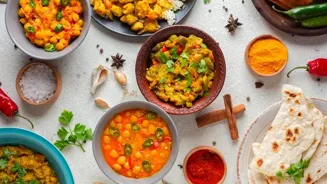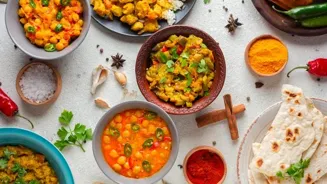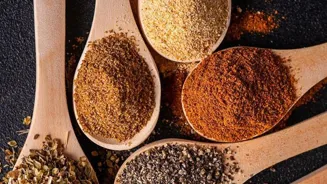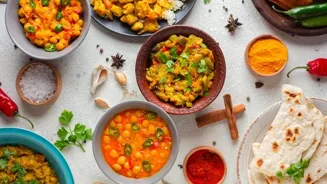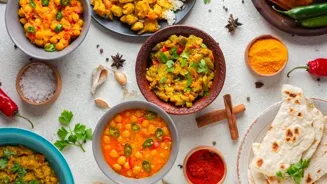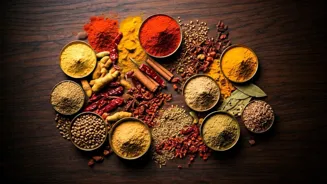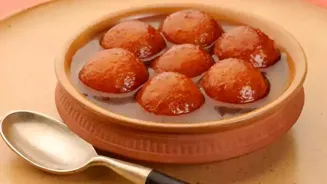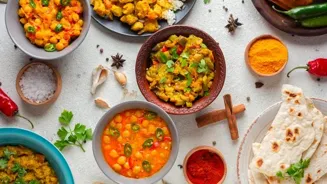Unravel the captivating journey of Indian cuisine - from ancient grains to Mughal opulence - in a culinary evolution saga. Discover the flavors that shaped a vibrant culinary tapestry. Read on for a flavorful
trip through time!
From the fragrant spices of ancient trade routes to the diverse regional dishes gracing modern tables, Indian cuisine boasts a rich and captivating history.
It is a story of cultural exchange, religious influences, and innovative culinary practices, all woven together to create the vibrant tapestry of flavors we know and love today.
This article explores this fascinating culinary timeline, tracing its evolution from its earliest roots to its contemporary form. The secrets reveal how Indian kitchens have evolved to suit tastes of the present day world.
The Indus Valley Civilization shaped early Indian cuisine
The Indus Valley Civilization, flourishing between 2500 and 1900 BCE, marks the earliest known chapter in India's culinary journey. Archeological evidence suggests that inhabitants cultivated barley, wheat, lentils, and various fruits and vegetables.
The practice of storing these grains in massive warehouses shows the cultivation of land for agriculture was very common those days. The significance given to agriculture in those days can be considered the early step towards the current Indian cuisine.
The use of clay ovens, similar to the tandoors used today, hints at early baking practices. While detailed recipes remain elusive, it is certain that vegetarian staples played a central role in their diet.
This early civilization laid the foundation for many of the culinary practices that would define Indian food for centuries to come.
Ayurveda in Vedic period shaped Indian cuisine through doshas and food categories
The Vedic period (1500-500 BCE) witnessed the rise of Ayurveda, an ancient system of medicine that deeply influenced Indian cuisine. Ayurvedic principles emphasize balancing the body's doshas (energies) through food.
This led to the integration of specific spices, herbs, and cooking methods believed to promote health and well-being. The concept of 'sattvic' (pure), 'rajasic' (stimulating), and 'tamasic' (dull) foods emerged, categorizing ingredients based on their perceived effects on the mind and body.
The consumption of dairy products, especially ghee (clarified butter), gained prominence during this era.
Further, the religious practices of the Hindu religion also impacted the traditions of food, as there were fast which required eating a certain kind of food, and to avoid foods which were termed unhealthy by the religious leaders.
The Mauryan Empire promoted vegetarianism and culinary exchange
The Mauryan Empire (322-185 BCE) saw the unification of much of the Indian subcontinent and with it, a greater exchange of culinary ideas. Travel and trade routes expanded, bringing new ingredients and techniques to the fore.
The influence of Jainism, with its emphasis on non-violence, further solidified the importance of vegetarianism. A well-organized agricultural system ensured a steady supply of food, and royal kitchens likely experimented with elaborate dishes and cooking methods.
This gave way to a culture of specialized chefs who knew the techniques required for cooking a certain dish and the knowledge was passed down by generations. The emphasis on quality also became important factor during this time.
The Gupta period: Golden age of Indian culinary arts, refined fermentation, spices, sweets
The Gupta period (320-550 CE) is often considered a golden age in Indian history, and this prosperity extended to the culinary realm. Literature from this era provides detailed descriptions of feasts, elaborate dishes, and the use of sophisticated cooking techniques.
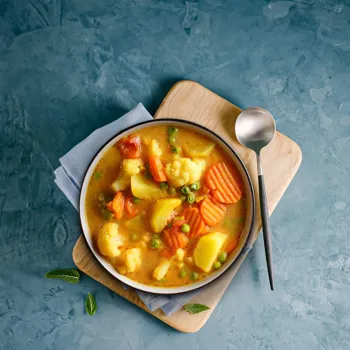
The art of fermentation became more refined, leading to the development of various types of breads and fermented foods. The use of spices became more widespread, with regional variations emerging based on local produce and preferences.
The popularity of sweets and desserts also surged, marking a shift towards more elaborate and sophisticated culinary creations. The regional variation in sweetness levels can be seen even in the present day, in the Indian shops.
Islam's arrival in India transformed cuisine, led by Mughal Empire
The arrival of Islam in India, beginning in the 8th century CE, brought significant culinary transformations. The Mughal Empire, in particular, had a profound impact on Indian cuisine, introducing new ingredients, cooking styles, and dishes.
Meat dishes, such as biryani and kebabs, gained popularity, and the use of nuts, dried fruits, and cream became more common. The Mughal influence also gave rise to elaborate desserts like shahi tukda and phirni.
The blending of Persian and Central Asian culinary traditions with local Indian flavors resulted in a distinct and opulent cuisine that continues to be enjoyed today. Dishes such as Biriyani, which has Indian Origin and influenced by Mughals is a very common favorite dish of the people of India.
Indian cuisine evolves with colonial influence, Ayurveda for health
The colonial era, beginning in the 17th century, brought further changes to Indian cuisine. The introduction of new ingredients from the Americas, such as potatoes, tomatoes, and chili peppers, revolutionized cooking practices.
These ingredients were quickly adopted and incorporated into local dishes, becoming staples in many regional cuisines. The British also influenced cooking methods and table manners, introducing new dining customs and culinary techniques.
Today, Indian cuisine continues to evolve, blending traditional flavors with modern techniques and global influences. The chefs of the present day world, try to include the benefits of Ayurveda to create healthy food for the modern world.
AI Generated Content. Glance/InMobi shall have no liability for the content